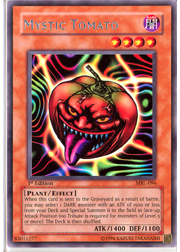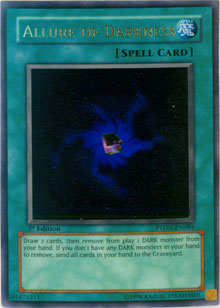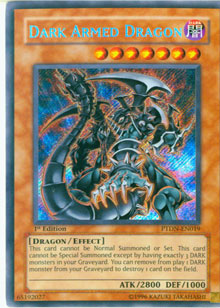A duelist on the competitive circuit is constantly pushed to devise new and innovative deck ideas in order to keep the competition off balance. New formats don’t make it easy to come up with a definitive solution to that problem. We know what the format is and what the new cards are, so keep that in mind while I discuss some practical techniques you can use to keep your mind fresh and come up with more ideas to outwit the competition at your next tournament!
How to Innovate at the Speed of Change
When your metagame is uncertain and you just don’t know what to build, there are many things you can do. I’m sure you’re familiar with brainstorming, but how often do you use it? This exercise is a very simple and rewarding tool you can use to stay at the top of the field. There are two ways you can do this. The first is the bubble format, which is great if you learn better from visuals. Here’s how you start:
 Take your pen or pencil and draw an oval in the center of a sheet of paper.
Take your pen or pencil and draw an oval in the center of a sheet of paper.
Inside this oval, write your most pressing problem in the form of a question: for instance, "Which cards can I add or remove to make my deck more consistent?"
Write at least 20 answers to this question in various "bubbles" or circles, connecting them all to the center oval with various lines.
Select the ideas that seem to stand out and try them.
You can try drawing lines to connect bubbles with synergetic ideas, too. For example, you can connect your Mystic Tomato bubble with your Sangan bubble.
If you’re a direct person, like me, then you can try a more straightforward approach:
Write your pressing problem as a question at the top of a sheet of paper.
Write at least 20 answers to that question.
Select the three that seem to be "better" than the others and immediately implement them.
With these two techniques, you gain multiple benefits. First, you will have a clearer idea of what your options are. Nothing is more refreshing than seeing your ideas on paper and getting them out of your head. Once your ideas are written down, you make room in your brain to think more about the best choices out of the 20 or so you’ve written. This is great if you find it tough to remember what your ideas are while simultaneously choosing the best of them all in your head.
Second, utilizing brainstorming will force you to use your brain for idea generation. We go through our daily lives without using much brain power to begin with. Scientists say we use only 10% of our brain potential, and I say that we only use about 1% or less in day-to-day life. With this practical method, you’re making use of your raw creativity to produce ideas, bad or good. Third, using brainstorming consistently will gradually make you more creative and a bit sharper too. It’s simple. Your brain is like a muscle: the more you exercise it, the stronger it gets. Thus, with increased brain activity you’ll be much smarter and your thinking will be quicker. If you don’t believe me, then try it for 30 days and see if you notice some changes.
Fast thinking and implementation is necessary if you want to stay at the top of the game. If you aim to consistently make Top 16s at Shonen Jump Championships, then it’s a great skill to be able to innovate at the speed of change. Metagames don’t stay stale for too long and you don’t want to be left behind. If you aren’t quick, you’ll find that your deck is no longer relevant for the environment.
How to Know if Your Deck is the "Right" Choice
So what do you do after you’ve selected the best ideas, tried them out, and are now looking to refine your deck or build a new one?
The March 1st playing field is baffling due to all the new possibilities available to the Yu-Gi-Oh! TCG community. Phantom Darkness opened the proverbial Pandora’s Box of possibilities and I’d say it’s the best set since Invasion of Chaos. Never before has there been such an unprecedented opportunity to play decks that you once couldn’t fathom as semi-competitive or high-level material. Since we’re all facing the same dilemma, the challenge is to create a deck that is tournament-worthy. I define tournament-worthy, in a general sense, by a few points:
The deck is highly consistent at what it is built to do (this includes opening hand quality).
Its goals result in effective efforts toward victory.
It has favorable matchups with a significant percentage of the top decks.
Please keep in mind that these are general rules of thumb that I have been using lately. You may have different criteria.
 Rule #1 is always about consistency. Can your deck accomplish what it is built to do a majority of the time? Are your opening draws consistent? Can you draw into what you need often enough? If your answers are mostly "no," then set it aside and begin anew. More often than not, the average deck can get the right cards it needs to win, but it’s woefully inadequate at doing so (Allure of Darkness makes consistency easy). It might happen three or four times out of every ten games, but that simply isn’t enough. If you pass Rule #1, then you can move on to Rule #2. It’s not too difficult to build a consistent deck, yet what your deck is built to do might not make any bit of difference in matches against the best strategies.
Rule #1 is always about consistency. Can your deck accomplish what it is built to do a majority of the time? Are your opening draws consistent? Can you draw into what you need often enough? If your answers are mostly "no," then set it aside and begin anew. More often than not, the average deck can get the right cards it needs to win, but it’s woefully inadequate at doing so (Allure of Darkness makes consistency easy). It might happen three or four times out of every ten games, but that simply isn’t enough. If you pass Rule #1, then you can move on to Rule #2. It’s not too difficult to build a consistent deck, yet what your deck is built to do might not make any bit of difference in matches against the best strategies.
If you put together a deck that can bring Levia-Dragon - Daedalus out on turn 2 or 3, that’s quite an achievement. Unfortunately, it may not mean much in the grand scheme of things. So what? You can bring out the Dragon insanely fast, but does it cripple your opponent so effectively that he or she cannot come back from it? Can you accomplish this feat without expending more options that necessary? Can 2600 ATK keep Dark Armed Dragon or Dark Magician of Chaos from ruining your day? The point here is effectiveness and relevance. Just because a given effect is good doesn’t mean a deck should be built around it.
Rule #3 is a testing issue. Once you prove that your deck is consistent and effective, now you have to match it up versus the gauntlet of "decks to beat." What are your win percentages? Out of ten games, how many times did you win without side-decking? How many games did you win when you sided appropriately? If you’re not getting past 60%, then your side deck better be up to par. What if your 10-round tournament day pits you against six Dark Armed Dragon decks? If your win percentage is only 60%, then you’ll win only three or four matches against this deck during the competition. Losing twice against the most popular deck can send you packing.
 You should also think about how well you do against the expected field of your next tournament. Let’s say that the decks to beat are Dark Armed Dragon Return, Diamond Dude Turbo, and Gadgets. Can you consistently beat at least two out of the three? If so, then you should do well. If you can only conquer one of these beasts (Gadgets) then you can hope for one of two things during your tournament day: 1) pray you don’t get matched up against the other two decks (unrealistic) or 2) "steal" wins from the matchups you’re not supposed to win. You have more control over option #2, but you have to be a pretty good duelist to consistently outplay a field of bad matchups, even if they’re piloted by average players. If you manage to get by until the later rounds, then you may be eliminated by the experts. Either way, it’s all up to chance. Do you like to gamble with your travel money?
You should also think about how well you do against the expected field of your next tournament. Let’s say that the decks to beat are Dark Armed Dragon Return, Diamond Dude Turbo, and Gadgets. Can you consistently beat at least two out of the three? If so, then you should do well. If you can only conquer one of these beasts (Gadgets) then you can hope for one of two things during your tournament day: 1) pray you don’t get matched up against the other two decks (unrealistic) or 2) "steal" wins from the matchups you’re not supposed to win. You have more control over option #2, but you have to be a pretty good duelist to consistently outplay a field of bad matchups, even if they’re piloted by average players. If you manage to get by until the later rounds, then you may be eliminated by the experts. Either way, it’s all up to chance. Do you like to gamble with your travel money?
Please think carefully about your deck choices and test them thoroughly. Use brainstorming to discover new ideas that may be lurking somewhere inside your head. True innovation can lift you to victory at your next Shonen Jump Championship!
Thanks for reading and have a great week.
—Bryan Camareno